






| Red-backed Shrike (Lanius collurio (Linnaeus, 1758)) |







|
|
Scientific name: Lanius collurio (Linnaeus, 1758) Common name: Red-backed Shrike French name: Pie-grièche écorcheur Order: Passeriformes Family: Laniidae Size: Body size: 16 to 18 cm; Weight: 22 to 47 g; Wingspan: 24 to 27 cm. Habitat: Open country with meadows, hedgerows and copses. Food: Red-backed Shrikes look for preys from low perches like fence posts as an example. They mainly feed on insects caught on the ground but also on small mammals, lizards and frogs. They may make stocks of food by impaling preys on long thorns. These storage areas are called larders. Nesting: The nest is a voluminous construction, at a low height in a dense and thorn bush. There is one clutch per year with 4 to 6 eggs. Migration: European populations and populations from western Asia move to tropical Africa or to South Africa in winter. The other Asian populations winter in India, Thailand and Malaysia. Geographic area: Europe except in the centre and in the south of the Iberian Peninsula and in northern regions, Asia east to Siberia. |
Red-backed Shrikes show an important sexual dimorphism. Males have pale grey cap, nape and rump. The eyes are crossed by a broad black band. The under side of the body is pinkish white, the back is reddish brown. The bill is black and slightly hooked. Females are russet brown on the upper side and creamy white on the under side. They show some black vermiculations on their chest and flanks. Juveniles are similar to females but with a less uniform colour on their back. |
| [To know more about the Red-backed Shrike] [Next picture] [Top] |
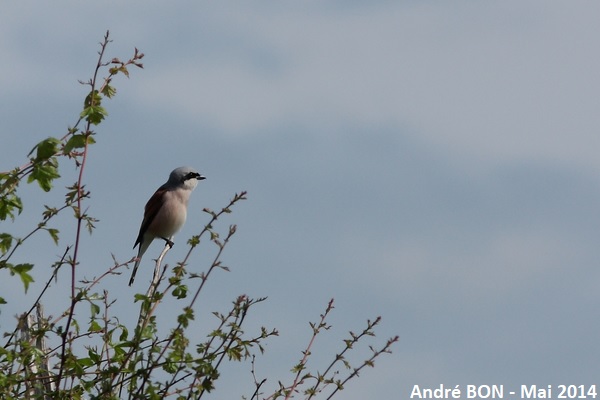
|
In this area near my native village, the habitat suiting the Red-backed Shrikes narrowed considerably over the past twenty years. 95% of hedgerows have been removed because of the consolidation and more than half of the prairies are now plowed and cultivated. I am wondering whether there are specific actions to protect the few that remains. |
| [To know more about the Red-backed Shrike] [Next picture] [Previous picture] [Top] |
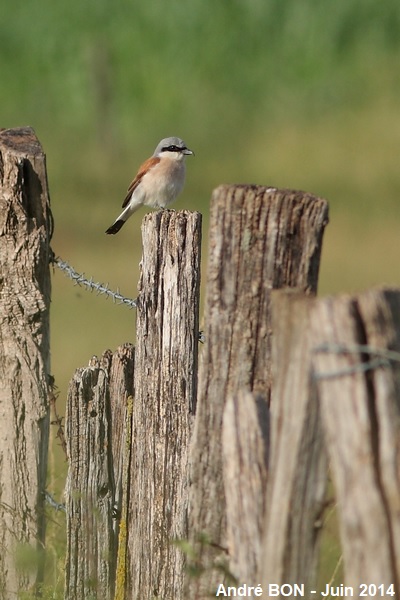
|
I have shot almost all these pictures of Red-backed Shrikes from my car. I am used to driving on a gravel road between pastures and I often see some of them perched on fence posts. |
| [To know more about the Red-backed Shrike] [Next picture] [Previous picture] [Top] |
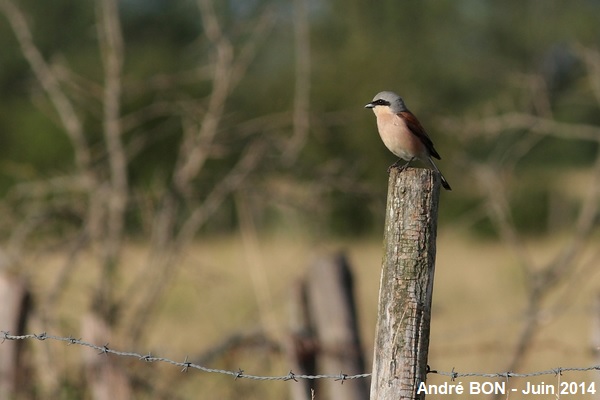
|
I need to buy an electric car which will be more silent. Then I will be able to get closer to these Red-backed Shrikes without having them fly away. |
| [To know more about the Red-backed Shrike] [Next picture] [Previous picture] [Top] |
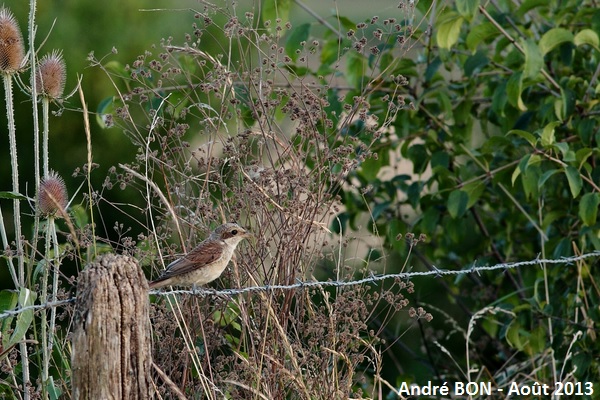
|
Juvenile. |
| [To know more about the Red-backed Shrike] [Next picture] [Previous picture] [Top] |
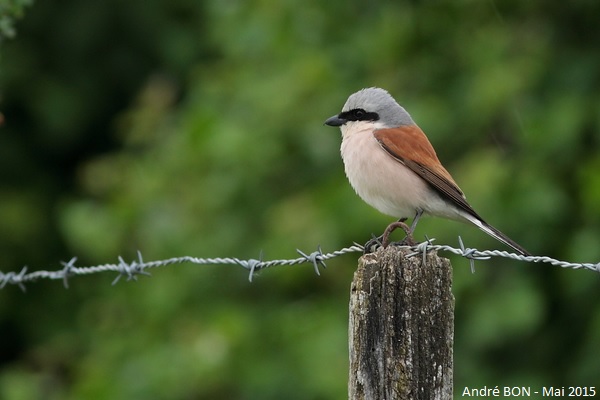
|
This time I may have been helped by the rain or by a less shy bird … |
| [To know more about the Red-backed Shrike] [Next picture] [Previous picture] [Top] |
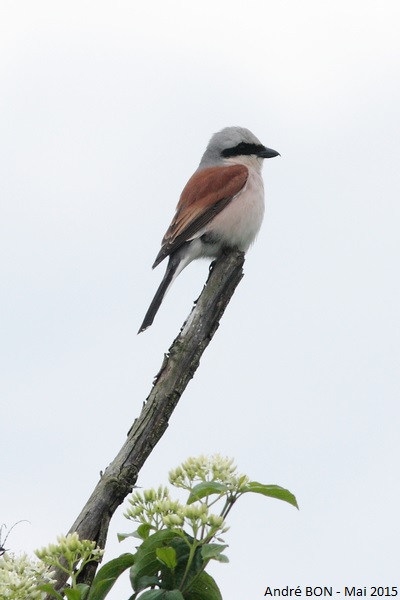
|
Isn't it a good observation point to wait for preys? |
| [To know more about the Red-backed Shrike] [Previous picture] [Top] |
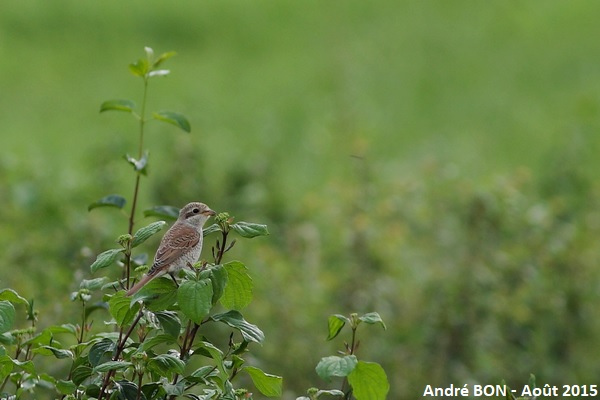
|
The colour of the upper parts being not uniform, I think that this one is a juvenile and not a mature female. |